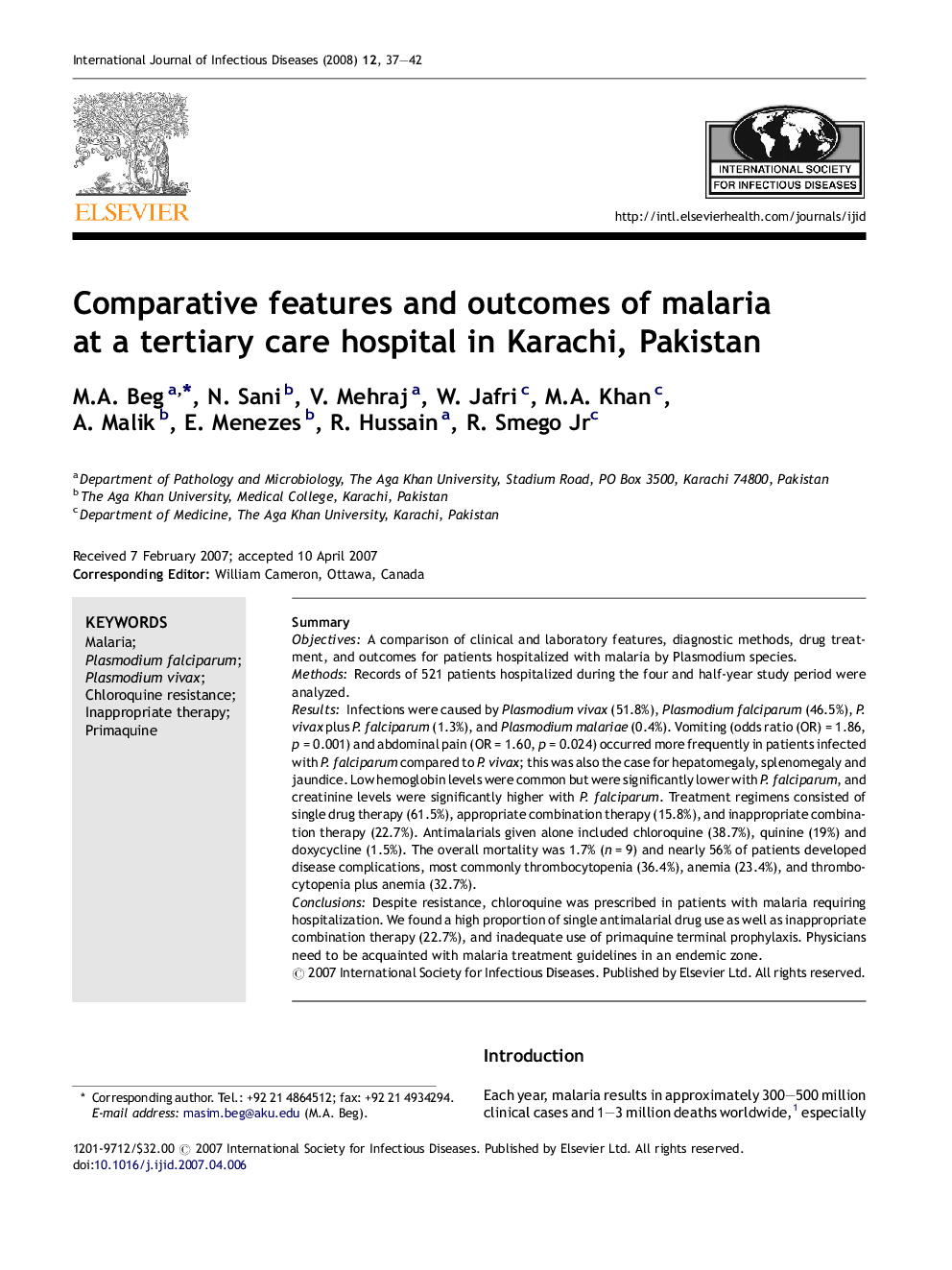| Article ID | Journal | Published Year | Pages | File Type |
|---|---|---|---|---|
| 3364160 | International Journal of Infectious Diseases | 2008 | 6 Pages |
SummaryObjectivesA comparison of clinical and laboratory features, diagnostic methods, drug treatment, and outcomes for patients hospitalized with malaria by Plasmodium species.MethodsRecords of 521 patients hospitalized during the four and half-year study period were analyzed.ResultsInfections were caused by Plasmodium vivax (51.8%), Plasmodium falciparum (46.5%), P. vivax plus P. falciparum (1.3%), and Plasmodium malariae (0.4%). Vomiting (odds ratio (OR) = 1.86, p = 0.001) and abdominal pain (OR = 1.60, p = 0.024) occurred more frequently in patients infected with P. falciparum compared to P. vivax; this was also the case for hepatomegaly, splenomegaly and jaundice. Low hemoglobin levels were common but were significantly lower with P. falciparum, and creatinine levels were significantly higher with P. falciparum. Treatment regimens consisted of single drug therapy (61.5%), appropriate combination therapy (15.8%), and inappropriate combination therapy (22.7%). Antimalarials given alone included chloroquine (38.7%), quinine (19%) and doxycycline (1.5%). The overall mortality was 1.7% (n = 9) and nearly 56% of patients developed disease complications, most commonly thrombocytopenia (36.4%), anemia (23.4%), and thrombocytopenia plus anemia (32.7%).ConclusionsDespite resistance, chloroquine was prescribed in patients with malaria requiring hospitalization. We found a high proportion of single antimalarial drug use as well as inappropriate combination therapy (22.7%), and inadequate use of primaquine terminal prophylaxis. Physicians need to be acquainted with malaria treatment guidelines in an endemic zone.
